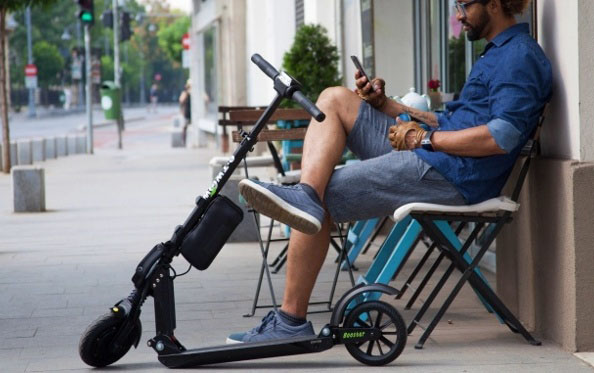Recently, Insurance Thought Leadership.com ran an article by editor Paul Carroll called “
The Future of Mobility Takes a Surprise Turn.” It’s about the emergence in urban, particularly downtown, areas of “micromobility,” aka “scooter sharing.” Some vendors are making electric scooters available, one being a startup called Bird, which reportedly has raised capital at a valuation of $2 BILLION. Another, Lime, has a valuation in excess of $1 billion. Both Uber and Lyft are experimenting with scooters.
I live in the Nashville, TN, area, and the (mis)use of these scooters has been a
high-profile news story. Visiting my son yesterday, I was amazed by the number of scooters flying by on sidewalks and streets; they created the appearance of a moving obstacle course. Paul’s article cites a
Washington Post article about the number of people who are ending up in hospital emergency rooms as a result of scooter accidents, both operators and victims. That is almost certainly going to increase, creating an emergency and significant risk that must be managed. One way to manage risk is insurance.
So, what are the insurance implications? First of all, I have no idea what liability insurance these vendors provide, if any, for themselves or operators. In this article, I’m addressing the operators’ and victims' own P&C insurance policies. Because I can’t cite the precise language of every P&C policy in the marketplace, my observations will necessarily be generalized and, I hope, spur inquiries by readers into what liability coverage, if any, is provided by the policies they sell.
See also: Will Technology Kill Auto Insurance?
Personal Auto Policies
Few, if any, PAPs would provide liability coverage for vehicles not specifically designed for use on public roads. Many policies expressly limit coverage to motor vehicles of the private passenger, pickup or van variety. Medical payments, uninsured/underinsured motorists and no-fault coverages MIGHT apply to someone struck by a vehicle designed for use on public roads, but that depends on the UM/UIM and no-fault statutes or case law in each state.
Homeowners Policies
Homeowners policies vary significantly in how they treat motor vehicles, but it is probably safe to generalize that most of them will not provide coverage for vehicles that do not service a residence, are not designed to assist the handicapped or otherwise are used off an insured location. In addition, most HO policies have fairly stringent business use exclusions, and it appears that these scooters are sometimes used for business travel.
Business Auto Policies
While the eligibility requirements of most BAPs are not as restrictive as PAPs, an unlicensed motorized scooter that is not subject to motor vehicle laws could conceivably meet the definition of “mobile equipment,” something that sends us a CGL policy….
Commercial General Liability Policies
Motor vehicles not subject to MV laws that are “designed for use principally off public roads” may qualify as “mobile equipment” and may, therefore, be covered under CGL policies. The $64,000 question is whether these vehicles are designed for use off public roads, regardless of how they are operated.
See also: The Need to Educate on General Liability
Needless to say, we have more questions than answers. Do the policies you sell cover these exposures? Are your customers asking about this?


